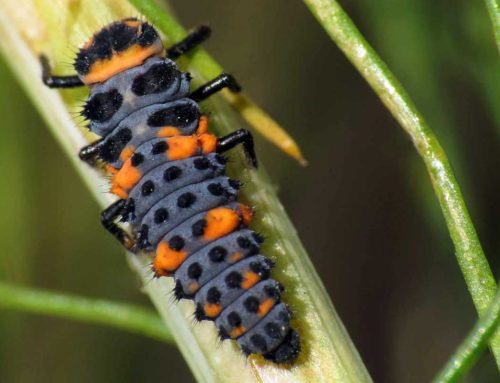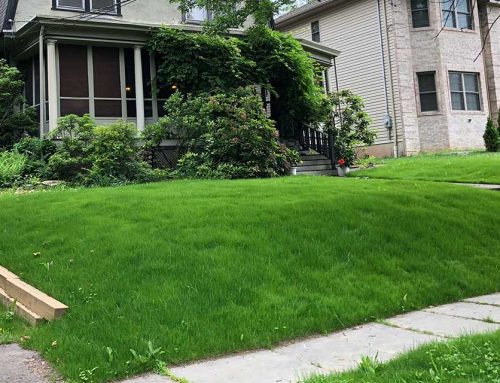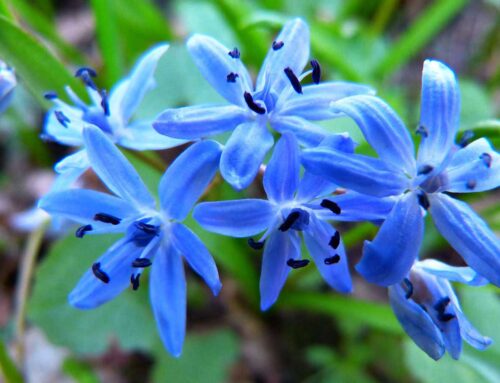Turf Management During Heat Waves
When temperatures begin to rise, the interactions between cool season grass and it’s environmental stressors usually become problematic. A combination of drought, heat, and disease, are what cause most of the grass injuries seen during the summer. Heat stress is the most common factor that will weaken your turf until it’s killed by other common mid summer stressors. Here are some ways that you can help out your grasses this summer.
Summer Dormancy
The growth of cool season turfgrass is dependent on the temperature. In long, extended periods of moisture and heat, these cool grasses will cease to grow, and eventually the leaves will turn brown and die. This condition is known as summer dormancy, and thankfully, is reversible. When the cooler temperatures and moisture return, the grass will start to grow back. Dormancy can be confusing to diagnose, and may be incorrectly diagnosed as pest damage and may hide the signs of actual pests.
Heat Tolerant Grasses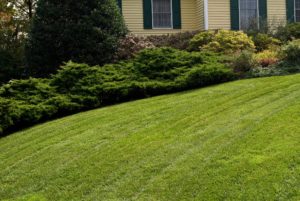
Grass species differ in their genetics from heat hardiness. Cool season grasses, like tall fescue has good heat hardiness, as well as Kentucky bluegrass, which has medium heat hardiness. While fine fescues and perennial ryegrass have decent heat hardiness, some studies show that with good attention and care, we are able to reduce some of the effects of heat stress. A little water stress will increase heat hardiness; while excessive nitrogen levels or overly acidic soils will help decrease heat hardiness; and a balance of phosphorus and potassium in relation to nitrogen helps attain maximum heat hardiness. You can’t control the weather, but you are able to control some of the other stress factors that make summer damage such a hassle.
Common Diseases
Red thread or pink patch is able to be diagnosed on lawns where the temperatures are anywhere from 50 to 75 degrees and rain is plentiful. If in these conditions, the pink coloration of red thread mycelium, or pink clumps of pink patch are typically easily seen in your grass. When the conditions that support red thread begin to fade, which are warmer temperatures and drier weather, the pink thread also fades and you are left with circles of brown turf. Though red thread may eventually become prolific on fine fescues and perennial ryegrass, the damage is usually only cosmetic and tends to not be deadly. You should clip afflicted areas and remove those clippings from the lawn, as that is how the disease is spread further.
Dollar spot is another common summer disease that can be a problem in the hot summer months. It is distinguished by small, brown patches of dead grass and peaks when the temperature conditions are in the mid 80’s, accompanied by high humidity. White mycelium will cover the infected leaves whenever the humidity is high. Affected leaves are marked by yellow-green blotches that turn into straw colored lesions and are bordered by a reddish-brown outer line. It will worsen from improper watering, poor fertility, and is spread by moving the infected clippings by wind or water, or possibly by shoes or equipment. You should always immediately collect the clippings from dollar spot in order to prevent other grasses from becoming infected.
Turf Management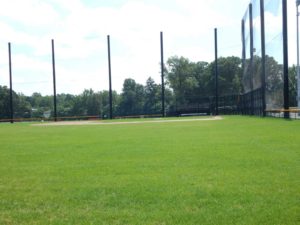
Knowing how to balance the fertility of turf is a valuable growing tool; and this is especially important to know when trying to prevent plant diseases. There are many examples where fertility practices can directly effect the development of diseases. Using too much quick release nitrogen in late spring can worsen the development of leaf spot diseases. Brown patches in your lawn will become worse from application of water soluble nitrogen by itself, and will be much less severe when using complete fertilizers that utilize slow release nitrogen. If your turf is starving, it is much more likely to catch dollar spot, red thread, or rust disease. Higher pH levels will create an environment that is ideal for these summer patch diseases. Try to become familiar with the many different disease problems that are common in grasses you use, and make sure to adjust how you care for them accordingly.
When turf is having problems because of hot temperatures, it will wear quickly. Walking on grass and mowing are two common examples of wear that can cause turf damage during the summer. It doesn’t always show up immediately and in general will show up very gradually. Trampled turf isn’t able to regenerate new leaf tissue as easily during the hot summer months. This can be important to fix in areas where turf is walked on frequently, such as athletic fields or in playing fields for schools. Mowing damage occurs frequently during the summer also, mostly from tires heating up during mid-day mowing or when the blade’s rotation dries the grass to a critical point. This can cause tire marks as well as brown streaks. The easiest way to avoid these problems is with preventative seeding, so that when the grass starts to become damaged, there is already new grass coming up to replace it.
Using low mowing heights will also increase the overall stress of your grass. As a result, low cut turf is more prone to diseases such as leaf spot and summer patch diseases. The shallow roots below the low cut 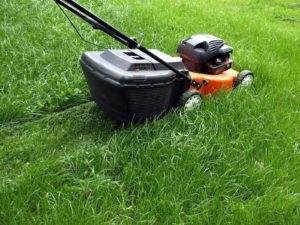 turf are more prone to heat and drought damage and aren’t able to supply water to the plant. Most people just raise their mowing height in the summer; but waiting until summer to raise the mowing height does more harm than good. Root growth on cool season grasses is mostly active when soil temperatures are cool in the spring and root growth slows and eventually stops as the soil temperatures heat up. By raising the mowing height too late in the season, the already shortened roots cannot grow enough to support the tops of the plant. So, instead it’s better for your grass to keep the mowing height in the 3-4 inch range in the spring and leave it there all season.
turf are more prone to heat and drought damage and aren’t able to supply water to the plant. Most people just raise their mowing height in the summer; but waiting until summer to raise the mowing height does more harm than good. Root growth on cool season grasses is mostly active when soil temperatures are cool in the spring and root growth slows and eventually stops as the soil temperatures heat up. By raising the mowing height too late in the season, the already shortened roots cannot grow enough to support the tops of the plant. So, instead it’s better for your grass to keep the mowing height in the 3-4 inch range in the spring and leave it there all season.
Weeds
As the cool season grasses begin to slow down, the competition from warm-loving weeds can become very severe. When managing weeds, you should pay careful attention to your own mowing practices as well as fertility practices. Once those are covered, you should start by identifying the weeds in your yard and coming up with a plan for managing them. Here are some common weeds that can be a pest:
Crabgrass is most common in the early summer and can be easily treated using post emergence herbicides. The type of herbicide will depend on the growth stage of the crabgrass, which can vary depending on the location.
Nutgrass, or nutsedge will appear throughout the early summer. This weed can only be treated whenever you can see it, so you have to be on the lookout for light green, triangular stems that tend to grow faster than the surrounding turf in between mowings. Post emergence herbicides containing the active ingredients halosulfuron or sulfentrazone are effective against this weed, but will require a quick response from the nutgrass sightings and repeated applications are necessary in order to get rid of the weed.
Broadleaf weeds can be treated throughout the summer, and there are many different products effective for just about any broadleaf weed you’ll find. For the best results, accurate identification of problem weeds is critical, so you know which cultural practices and herbicides will provide the most effective control. Here’s a great reference for identifying different broadleaf weeds.
Insects
When dealing with turf that looks extra drought-stressed, or doesn’t rebound from summer dormancy, it may have been affected by insect damage. In the beginning of summer, look out for hairy chinch bugs, billbugs, and sod webworms. These are some insect pests that are common on lawns with a lot of thatching in your turf. You should generally inspect brown patches in your turf to find and get rid of these pests.
Chinch bugs are found buried in the thatch or just along the surface of dried thatch. They are quick and can be distinguished from their feeding, which causes areas of turf to turn yellow and red before it will turn browns. For webworms and billbugs, look for feeding damage made on the grass blades. You can rid these pests with a soap solution applied to the surface of your lawn. This will help bring webworms to the surface where you can see them, then you can rake them away. Check areas where there are many dead stems for billbugs by doing a tug test. If you’re able to pull stems right out, and they have chewed ends packed with sawdust like frass, you’ll probably find billbug adults at the base of the plant along with small legless grubs on the roots.
When it comes to turf management, summer is one of the most important times. There are plenty of pests you should be watching out for, along with many ways you should be managing your lawn; such as keeping in mind that heat plays a major role in the well being of cool season grasses. Everything we choose to do to our yard will have some effect on it, whether it is a good or bad effect.
Lincoln Landscaping “The Natural Choice”
Mike Kolenut President & CEO
https://lincolnlandscapinginc.com
(201) 848-9699


